Nature-based Solutions 101
Nature-based solutions are among the most cost-effective strategies to counter the challenges society faces — the dual crises of biodiversity loss and climate change. That’s why NCC is allied with nature to address these crises.
According to the International Union for Conservation of Nature, nature-based solutions are actions to protect, sustainably manage and restore ecosystems, effectively benefitting human well-being and biodiversity.
Read below for highlights of NCC properties where nature and NCC are working hand in hand to provide nature-based solutions.
Flood mitigation

Minesing Wetlands, Ontario
Healthy marshes and wetlands act as a natural sponge. They store water, cutting the volume by as much as half during peak flood season. The Minesing Wetlands in Ontario are considered one of the most important wetlands in the world and are designated a Ramsar Wetland of International Importance.
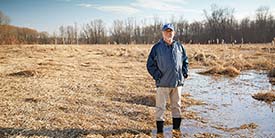
Minesing Wetlands, ON (Photo by Mike Ford)
While the area has become a cherished spot for visitors, it is far more than just a wilderness jewel. In essence, the marsh is vast enough to spread out water’s flow during flood season and slow it down. Communities downstream are protected from catastrophic floods, now and for years to come.
Health

Asquith, Saskatchewan
The health and well-being that time in nature offers are two other nature-based solutions. There is growing scientific evidence that spending time in natural areas has benefits that range from increasing mental acuity to alleviating obesity, attention issues, anxiety and depression.
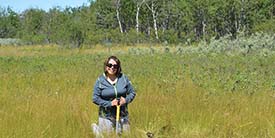
Planting milkweed, Asquith, SK (Photo by Ruth Thompson)
Many of NCC’s properties, such as Asquith in Saskatchewan, offer trails and other features to help visitors connect with nature and harness the power of nature to boost mental and physical health.
Food security

Marsh Ranch, Alberta
By protecting natural areas, like Marsh Ranch in Alberta, we can ensure livelihoods for ranchers and landowners who use the land, while ensuring the health and well-being of cattle.
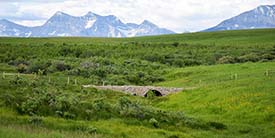
Marsh Ranch, AB (Photo by Carys Richards / NCC)
Healthier grasslands lead to a greater diversity of native plants and animals. And in many cases, native plants allow the grasslands to be a more powerful sponge for carbon.
Water quality

Riverside-Albert, New Brunswick
In addition to flood mitigation, healthy natural areas act as giant kidneys. They filter sediments and contaminants, such as heavy metals and agricultural fertilizers, out of the water as it passes through.
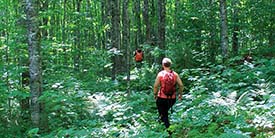
Riverside-Albert, NB (Photo by NCC)
In the village of Riverside-Albert, New Brunswick, NCC’s project was urgently practical: using nature’s own power to protect drinking water. NCC worked to conserve the forest surrounding the town’s reservoir, which helped slow down and filter the water before it reached the reservoir.
Climate change

Darkwoods, British Columbia
The conservation of natural areas, such as Darkwoods in BC, is an important tool in efforts to mitigate the impacts of climate change. Darkwoods has sustained more than four decades of small-scale timber harvest.
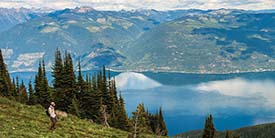
Darkwoods Conservation Area, BC (Photo by Gordon MacPherson)
Now, with the timber activity on the property diminishing under NCC’s ownership, the vast majority of the forest will remain standing and will absorb and sequester a larger amount of carbon dioxide than would occur if logging operations continued at a more intense level. Carbon sequestration is an important strategy in reaching Canada’s net-zero emission goals.
Biodiversity loss

Rivière aux Brochets, Quebec
Once a natural area is conserved, the work of ecosystem restoration can be critical to species at risk recovery, the fight against biodiversity loss and maintaining the benefits and services that nature provides for people. Seventy kilometres southeast of Montreal, in a small section of the Rivière aux Brochets, is one of the few known spiny softshell turtle egg-laying sites.
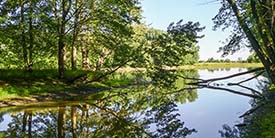
Rivière aux Brochets, QC (Photo by NCC)
Since spiny softshell turtles tend to return to the same nesting and hibernation sites year after year, it is therefore even more crucial to conserve these critical habitats. NCC now protects and cares for two sites along the river. Overall, NCC conserves habitat for at least 236 species at risk in Canada.



